MAIL US:info@burjnahargroup.com
Contact Us
Deira, Dubai, PO.BOX: 41943
Call Us
Mail Us
Welcome To Burj Nahar Services
WELCOME TO BURJ NAHAR SERVICES
SERVICES
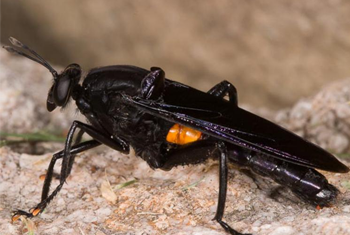


PEST CONTROL
Burj Nahar Pest Control is a division of BNS Group of Companies & a sister concern of Fathima Group who serves as a pioneer of medical institutions in UA.E. For two decades. We understand that the perfect presentation. high cleaning standards and hygienic environment can make a huge difference in the perception of your customers about your brand and business.
Burj Nahar Pest Control is a division of BNS Group of Companies & a sister concern of Fathima Group who serves as a pioneer of medical institutions in UA.E. For two decades.
Burj Nahar Building Cleaning Services aims to satisfy you by providing professional services that you can depend on. We have the reputation that is one of stellar character and enhanced customization.


Burj Nahar Pest Control is a division of BNS Group of Companies & a sister concern of Fathima Group who serves as a pioneer of medical institutions in UA.E. For two decades. We understand that the perfect presentation.
high cleaning standards and hygienic environment can make a huge difference in the perception
of your customers about your brand and business.
Our Integrated Pest Management Program (IPM)
Integrated Pest Management Program (IPM) is a decision making-process that anticipates and prevent pest activity and infestation by strategies to achieve long term solutions.
Educating Our Clients
We offer our clients training courses & workshops about Basic pest control knowledge and hygiene procedures before and after each treatment. From our routine visit to the site, we will provide our clients with the current pests problems and the cause of the problems, this involvement, and participation by our clients help and ensures an effective Integrated Pest Management program.
Proper Waste Management
Special reporting system (SRS) to be done by a registered and certified technician who will thoroughly inspect your premises for areas that could be the source of the growth of the pests, and includes the recommendation to improve the deep cleaning level.
Structural Repair, Maintenance
Pest infestation most of the time could be controlled by keeping the premises well maintained.
Biological And Mechanical Control
We adopted the use of the biological material e.g Insect Growth Regulator (I.G.R) and the mechanical control by using glue traps, snap traps, water traps with food attractant.
Pesticides Application
When we implement all four phases of the Integrated Pest Management, the quantity and the frequency of the pesticide applications as needed for an effective pest control program will be reduced.


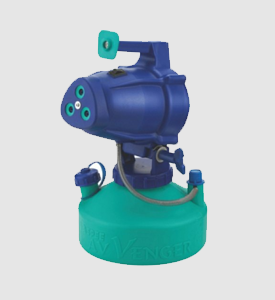
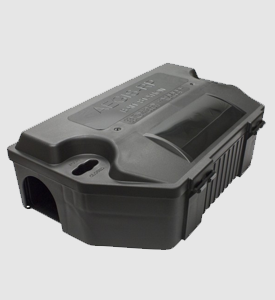
Fogging Machine
Sprayer
ULV Machine
Bait Station


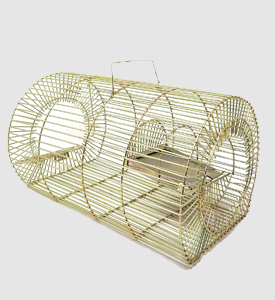
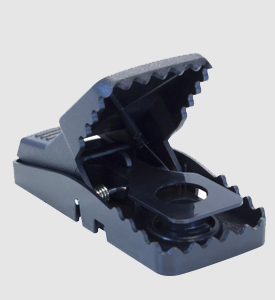
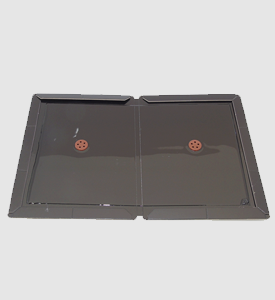
Rodents Glue Trap
Snap Trap
Rat Cage
Flay Trap
Cockroach Trap
Guidelines about our Pest Control Procedures:
We always begin with a full inspection of the premises.
Followed by placing traps as a monitoring system to identify what kind and species of the pest problem, and to know as well the infestation level. Only afterward, we can decide what type of treatment should be applied to ensure a 100% pest free premises. Then traps to be placed as an early warning system.
Our signs system, guides, and assists our technicians to do an immediate check-up and read the traps, and accordingly to carry on the work with an effective treatment. Also for cleaners to aware not to touch, disturb, or throw away traps/baits as (monitoring system) as it will fail the purpose of good pest management programming.
Special Reporting System (SRS) from our routine visits to the premises we will provide our client with a written technical report with the following formations:
- Date of the application.
- Current pests problems.
- Materials and techniques that have been used.
- Preventive procedures (goods reception procedures, building status, hygiene level.)
The accumulated records will plot the effects of any control Measures, supported by charts.
Cockroaches
Here is one thing that nearly everyone in the world agrees upon. All throughout the world, on every continent where they can be found, in every nation, state, city, town, and village, people detest cockroaches. This universal loathing of cockroaches is no accident, either. Consider the following:
- Cockroaches threaten human health because they transmit or aggravate many serious diseases, including Salmonella, E. Coli, food poisoning, asthma, and Hepatitis E, diarrhea, and dysenteryRoaches shed their skins, and their droppings contaminate hundreds of thousands of pounds of stored food every year.
- Roaches are one of the most difficult pests to eradicate, due to their adaptability, their ability to quickly become resistant to insecticides, and their prolific reproductive habits.There are thousands of species of cockroaches, but only four species are common household pests. Cockroach behavior varies by species, but the following characteristics are generally true.
- Cockroaches tend to live in close proximity to each other, but they are not social insects. They have no social structure or division of labor, and they do nothing to care for their young other than to deposit their eggs in areas close to food, water, and harborage.
- All cockroaches develop through incomplete metamorphosis. Adult females deposit their oothecae, or egg sacks, in an area favorable to the development of the young. Immature cockroaches emerge from their eggs as nymphs, who look very much like adults except for their smaller size and lack of wings. The nymphs develop through a series of molts, with the stages between molts known as "instars." There is no pupal stage
- The time span between hatching and reaching reproductive age can be as little as two to three months. As adults, cockroaches can live as long as a year under ideal circumstances (although three to six months is probably more typical).
Reproductive Potential of Cockroaches
Cockroaches are among the most prolific insects in the world. Their rapid reproduction is one of the reasons why a single pregnant cockroach carried home in a grocery bag really can explode into a major infestation in almost no time at all.
A German cockroach in an average environment, with sufficient food, warmth, moisture, and harborage, lives for about three or four months, on average. During this time, a female will produce 4 to 6 oothecae, with each ootheca containing between 30 and 40 eggs. This makes for an average reproductive potential of between 120 - 240 live offspring during her lifetime.
German cockroach nymphs reach sexual maturity in about 8 to 12 weeks under favorable conditions. So factoring in the reproductive potential of her offspring, a single female German cockroach (or even a single ootheca) brought into a home can swell to an infestation of hundreds or thousands of roaches in the course of a year.
Common Cockroach Species
There are several thousand species of cockroaches, but these four species account for the bulk of interior cockroach infestation in the United States. Do-it-yourself cockroach control begins with identifying the correct species.
German Cockroaches
The German Cockroach (Blattella germanica) is the roach that exterminators are most often called upon to control in the United States. Adult German cockroaches average about five-eighths of an inch long. They have long antennae which they use to detect chemicals, moisture, air currents, and probably sound waves and vibrations in their environment.
German cockroaches prefer warm, moist areas, and are frequently found in kitchens and bathrooms. Thousands of german cockroaches can occupy a single kitchen.
American Cockroaches
American Cockroaches (Periplaneta americana) are large roaches, ranging in length up to an inch and a half. These are the roaches that people usually are talking about when they say "You could have put a saddle on it."
American cockroaches prefer dark, moist, warm areas. They are commonly found in basements, steam tunnels, boiler rooms, rubble foundations, and similar places. Often they aren't even noticed until a light is turned on, and they scurry away rapidly. Adult American cockroaches of both sexes have working wings and at least some flight capability, but oddly enough, they seldom fly.
Brown Banded Cockroaches
Brown-banded Cockroaches (Supella longipalpa) are about half an inch in length as adults. Adults of both sexes have wings, although only the males fly. Brown-banded cockroaches have two light-colored bands running across the base of their wings, hence the name "brown-banded cockroach."
Compared to other common roaches (such as the German cockroach, as which they often are misidentified), brown-banded cockroaches tend to prefer drier conditions. They're commonly found in bedrooms (especially in the cabinets and night tables), in closets, behind peeling wallpaper, and inside electrical and electronic equipment.
oriental Cockroaches
Oriental Cockroaches (Blatta orientalis) are black or very dark brown in color and roughly an inch in length. Adult males' wings reach about three-quarters down their abdomens, but they cannot fly. Adult females have only small wing pads.
Oriental cockroaches tend to live outdoors when the weather is warm, but they readily move inside during extremes of heat, cold, or drought. They can commonly be found in garbage storage areas, basements, and under porches and decks. They're often found along with sill plates in unfinished basements and crawl spaces.
Turkish Cockroaches
The adults of this species grow to about 1" in length, with the female being a bit longer. The males are brownish-yellow in color and the females are dark brown to black in color. The wings of the male extend beyond the abdomen whereas the female wings are very short triangular pads separated by less than a wings width. The nymphs (young) are bi-colored with the thorax (front) being light and the abdomen being dark brown. The ootheca or egg capsules are 3/8 brown” long, dark brown, and contain about 18 eggs.
The males of this roach are commonly confused with American Roaches and the females with Oriental roaches.
This roach is a desert or semi-desert dweller. It can live inside under the right conditions but is most commonly found outside. Outdoor habitats include water meter and valve boxes, under leaf litter, and under heavy thatch in lawns. It is common in sewer systems and is capable of carrying the bacteria that cause dysentery.
Habits:
Biology:
Not a lot is known about this species other than nymphal development takes around 118-137 days, and adults live from 30 to 300 days.
Bed Bugs
Bed bugs are small wingless insects that feed solely upon the blood of warm-blooded animals. Bed bugs and their relatives have evolved as nest parasites. Certain kinds inhabit bird nests and bat roosts and await the return of their hosts; others have adapted well to living in the ‘nests’ (homes) of people.
Hatching bed bugs are about the size of a poppy seed, and adults are about 1/4 of an inch in length. They are oval in shape but are flattened from top to bottom.
What are bed bugs?
Their color ranges from nearly white (just after molting) or a light tan to a deep brown or burnt orange. The host’s blood may appear as a dark red or black mass within the bug’s body. Because they never develop wings, bed bugs cannot fly. When disturbed, bed bugs actively seek shelter in dark cracks and crevices. Cast skins of bed bugs are sometimes discovered. Although such a finding confirms that bed bugs had been present previously, it does not confirm that any continue to infest the residence. Thus, inspect carefully for live crawling bed bugs. Because many other kinds of small brown bugs may be discovered, it is critical to ensure that the bugs are correctly identified.
How do bed bugs invade a home?
Because bed bugs readily hide in small crevices, they may accompany (as stowaways) luggage, furniture, clothing, pillows, boxes, and other such objects when these are moved between apartments, homes, and hotels. Used furniture, particularly bed frames and mattresses, are at the greatest risk of harboring bed bugs and their eggs. Thus, one should carefully scrutinize and consider the history of any used furniture. Because they readily survive for many months without feeding, bed bugs may already be present in apparently ‘vacant’ and ‘clean’ apartments. Bed bugs can wander between adjoining apartments through voids in walls and holes through which wires and pipes pass. In a few cases, bats and/or birds may introduce and maintain bed bugs and their close relatives (bat bugs and bird bugs). Pest control personnel should be mindful of the presence of blood-feeding insects and mites that may be left behind after removing nests or roosts of birds and bats in and on the home.
They are two species of a bedbug that spread with Mankind as blood-feeding parasites. Cimex lectularius & Cimex hemipter. Bed bugs are detrimental to human health because,
- continuous blood-sucking night after night can cause anemia to young children or old men.
- repeated bites can cause allergic reactions, irritation discomfort, sleepless nights, etc.
Fleas
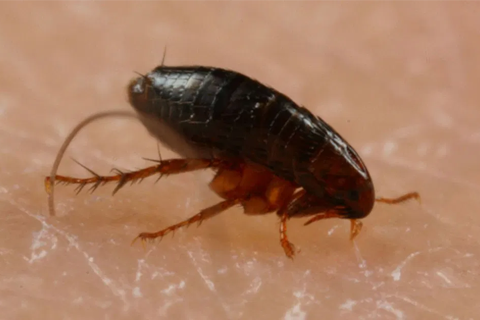

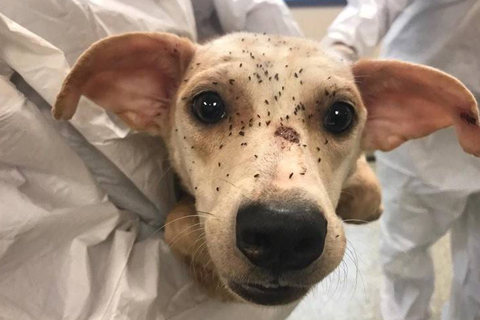
Biology of the flea
Bed bugs seek out people and animals, generally at night while these hosts are asleep, and painlessly sip a few drops of blood. While feeding, they inject a tiny amount of their saliva into the skin. Repeated exposures to bed bug bites during a period of several weeks or more causes people to become sensitized to the saliva of these bugs; additional bites may then result in mild to intense allergic responses. The skin lesion produced by the bite of a bed bug resembles those caused by many other kinds of blood-feeding insects, such as mosquitoes and fleas. The offending insect, therefore,
can rarely be identified by the appearance of the bites. A physician should be consulted to rule out other causes for the lesions and to offer treatment, as needed. The affected person should resist the urge to scratch the bites, as this may intensify the irritation and itching, and may lead to a secondary infection. Physicians often treat patients with antihistamines and corticosteroids to reduce allergic reactions and inflammation. Despite what you may have heard or read elsewhere, bed bugs are not known to transmit any infectious agents.
About 200 different species of fleas exist worldwide. Mature fleas feed with blood from the skin of their host: pets, people, and wild animals, like skates, fishes, and birds. The best-known species are the cat flea (Ctenocephalides felis felis, which can also bite dogs and humans), the dog flea (Ctenocephalides canis), and the specific human flea.
(Pulex irritans). These fleas belong to the group of wingless insects (Phylum: Arthropoda; Class: Insecta; Order: Siphonaptera; Suborder: Pulicidae). Fleas can transmit germs to their host, like eggs of tapeworms. The rat flea (Xenopsylla coreopsis) was the transmission vector of the bubonic plague bacteria (Yersinia pestis) that caused billions of victims in the Middle Ages.
Life cycle of a pet flea
Fleas of pets follow a life cycle that takes in an average of three to six weeks, although fleas may stay alive for about 1 year. Effective control of flea infestation aims to interrupt the life cycle.
Adult Flea
Adult fleas (1.5 - 6 mm) can remain attached to their host thanks to extensions (setae) en hooks. Before sucking blood, the flea pierces the skin of its host with its mouth and injects saliva that contains an anti-blood-clotting agent.
The saliva may cause an allergic skin reaction. After the first blood uptake, fleas undergo a metabolic change and need regularly new blood meals to survive (they become an obligate parasite). Adult females can consume about 15 x their own bodyweight of blood per day. After mating females can lay up to 40 eggs a day. Adult fleas (1.5 - 6 mm) can remain attached to their host thanks to extensions (setae) en hooks. Before sucking blood, the flea pierces the skin of its host with its mouth and injects saliva that contains an anti-blood-clotting agent.
Eggs
The eggs (about 0.5 mm) develop best in a warm and humid environment. The eggs, which are smooth and can easily fall on the floor, the hatch between 1 and 10 days of being deposited on the host.
Larvae
The larvae that emerge from the eggs mind light and extreme temperatures. Dark, sheltered dust nests like carpets, rugs, and splits in wooden parquet are ideal habitats for larvae. They feed on organic debris (e.g. crumbles and skin scales) or also on feces from adult fleas. The larvae go through three stages of instars.
The pupae stage
The adult larvae (about 5 mm in length) envelop themself with a sticky cocoon and turn into pupae. The pupae may remain dormant for months inside the protective cocoon.
Young flea
The young flea (in this view dissected out of the cocoon ) often stay inside the cocoon until they percept a favorable trigger, like a rise in temperature or carbon dioxide level of the surroundings, vibrations, or changes in the light pattern. Then, they crawl out of the cocoon within a couple of seconds and use their powerful posterior legs to jump on their host.
The most important fleas are Xenopsylla species which is a vector of plague distributed to the tropics and subtropics.
Flies
Flies are a group of winged insects that include many common pests. Houseflies, mosquitoes, and gnats are all examples of flies. Domestic flies are those commonly found around homes and businesses. Flies may carry disease or just be annoying.
Fly Biology
Domestic flies all have a similar life cycle. There are four stages of growth - egg larva (or maggot), pupa, and adult. Depending upon the type of fly, it may take about one to four weeks for the cycle to be completed. Eggs are laid by the female fly onto breeding material, usually dead animal or vegetable material. Most flies prefer the breeding material to be moist, but not liquid. Eggs can hatch very quickly, about 12 hours, after being laid.
The larva is a small, white or cream-colored, worm-like stage that hatches from the egg. The larva burrows into the breeding material where it feeds and grows for several days. Usually, the larva leaves the breeding material and moves to a dry, protected place just before becoming a pupa.
House Fly Life Cycle
The pupa is an inactive stage, like a cocoon, in which the adult fly develops. After leaving the pupal case, adult flies mate, and the females begin to lay eggs. Adult flies may live for several weeks.
There are three types of domestic flies commonly found around homes and businesses - houseflies, bottle or blowflies, and flesh flies.
Are grey and black with four black stripes on the back. They are about 1/4 inch long. Eggs are laid on decomposing organic matter, either plant or animal. Female houseflies lay, eggs in batches of 50 -100, and as many as 500 eggs may be laid in a lifetime. Depending upon the temperature, it may take as little as 10 days from egg to adult.
A very similar-looking relative of the housefly is the stable fly, sometimes called the dog fly. It is unlike other domestic flies because it actually bites and sucks blood. It breeds in decaying vegetation and can be common around livestock. Sometimes it becomes abundant at the beach where it breeds in rotting marsh vegetation or seaweed that has been washed ashore.
Have bodies with shiny metallic colors such as bronze, blue, or green. Adult flies are about '/4-inch long. Blowflies will lay eggs on any organic matter but strongly prefer animal flesh. Eggs are laid in clumps, and a female may lay hundreds in a lifetime. Despite what is commonly thought, meat does not need to be spoiled to attract these flies. Blowflies will lay eggs on freshly cooked meat. In fact, blowflies may even infest the wounds of living animals.
Sometimes when animals die in a crawlspace of a home, blowflies may breed in the carcass and the adult flies enter the house.
Are grey and black with three black stripes on the back. They are about as long and resemble large houseflies. As suggested by their name, they strongly prefer to breed in animal flesh. Unlike the other flies mentioned, flesh flies do not lay eggs, but small maggots. Flesh flies, like blowflies, will infest fresh meat, cooked or uncooked.
Two other flies may be common pests in homes or businesses.
Fruit flies are strongly attracted to the odor of rotting fruit and will sometimes be found around wine or vinegar. They may breed in overripe fruit or dirty trash containers.
Drain flies are small and dark grey. They are very hairy-looking and may sometimes be called moth flies. These flies are most common in the bathroom. They breed in the slimy layer that forms inside the drainpipes of sinks or tubs. Removing that slime layer with a brush will end drain fly problems.
Flies And Disease
Besides contaminating food with eggs and maggots, flies can carry bacteria that cause intestinal diseases. Flies can travel from fecal material to our food very easily, carrying bacteria with them on body hairs or the sticky pads on their feet. When feeding, flies expel saliva and feces that may also contain bacteria. Sometimes flies will lay eggs or maggots on the flesh or wounds of man and animals.
Sanitation
The key to fly control is sanitation. Adult flies are attracted by the odors of food or trash. Organic material may serve as food for adult flies or as a breeding place for fly larvae. Trash should be placed into bags and stored in sound trashcans with tight-fitting lids. Trashcans and dumpsters must be kept clean. Food scraps and spilled beverages will attract flies. Decaying organic material, like animal droppings, which might be a breeding place for flies should be removed.
Ants
Ant biology and life cycle
Ants are social insects that live in colonies that may include thousands of individuals. Ants, along with bees and wasps, are members of the order Hymenoptera and undergo complete metamorphosis passing through four stages:-
- Egg
- Larva
- Pupa
- Adult
The wingless worker ants are the most common adults seen. However, there are three types of adults:
- Queens
- Males
- Workers
Ant Biology Facts
New colonies can begin with mated flights:
A new ant colony usually begins as a new queen flies off from an old colony, mates with a male, finds a suitable site, drops her wings and excavates a nest, and cloisters herself within the nest for several weeks or more until her eggs mature. She lays her eggs within the nest, cares for her young, seldom or never leaving the nest again, relying on workers to groom her and feed the colony after the first generation is reared.
Some colonies are established Through Budding:-
For some ant species, such as the Argentine ant and the pharaoh ant, queens mate in the old nest and workers accompany the new queens to new nesting sites. In these cases, queens may not have wings or be able to fly well. Workers can also establish new colonies with or without mature queens through budding. Workers carry immature stages (eggs, larvae, pupae) to another nest site and rear some of the immature up as reproductive males and females.
Many of the most serious ant pests, including the Argentine ant, pharaoh ant, and the carpenter ant, have multiple queens within colonies. Others, such as pavement ants, have only one functional queen. After one season or a few years, depending on the ant species, a colony begins to produce reproductives leave the colony, often in swarms, to form new colonies. Only a few of the thousands of queens produced are successful in founding a colony. They are two species of a bedbug that spread with Mankind as blood-feeding parasites.
All ants species members live in colonies with one too many queens, immature, numerous sterile female workers, and occasionally males. Ants can be a threat to human health. Their presence under certain situations can pose a serious human health Risk, i.e. in food processing plants, food preparation areas, food packaging plants, because of the potential for disease transmission.
Ants are sometimes dangerous because of their bites or stings (e.g. Samsoom ants). Now, some areas in Dubai.
Rodents
MICE & RATS are common types of rodents found in homes and buildings. They live in the roofs, basements, crawlspaces, and sometimes in your living area. Rodents cause considerable damage to personal property, and structures, with their chewing and gnawing. Seventy percent of home fires each year can be attributed to rodents chewing on electric wires. In addition, rodents spread bacteria and life-threatening diseases.
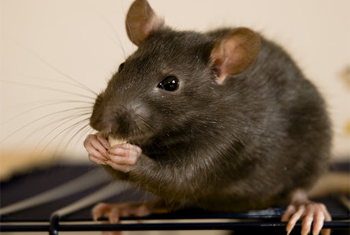

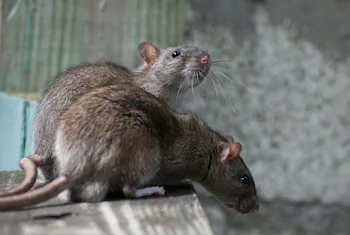
Mice
The adult house mouse is small and slender and about one to two inches long, excluding its tail. The tail is as long as the head and body combined. It has large ears, a pointed nose, and small eyes. The fur color varies, but it is usually a light grey or brown, but could be darker shades. You can tell them apart from native mice by their almost furless ears and scaly tails. They are good climbers, swimmers, and jumpers. They can run as fast as 8 miles per hour. Even so, they seldom travel farther than 50 feet from their homes. House mice in a city environment may spend their entire life in buildings. In rural and suburban settings, mice may not only live inside, but be found outside near foundations, in the shrubbery, weeds, crawl spaces, basements, or in garages. They make their nest from soft material like paper, insulation, or furniture stuffing. These nests can be found in many places including walls, ceiling voids, storage boxes, drawers, under major appliances, or within the upholstery of furniture. Outside nests are found in debris or in ground burrows. Mice are considered nibblers, eating at many times and at different places. Mice will snack every one to two hours throughout the day. However, they do have two main meal times, one just before dawn and the other at dusk. Many times in kitchens you will find gnawing damage on the corner of boxes and paper which is shredded for their nest.
They nibble our food, urinate on countertops and stoves, are usually active at night when we are unaware of their activities. Mice can bear about 48 babies in a year. These begin mating at five weeks old. Rodents can enter buildings through small holes and gaps around windows, plumbing, venting.
Rats, like house mice, are mostly active at night. They have poor eyesight, but they make up for this with their keen senses of hearing, smell, taste, and touch. Rats constantly explore and learn about their environment, memorizing the locations of pathways, obstacles, food and water, shelter, and other elements in their domain They quickly detect and tend to avoid new objects placed into a familiar environment. Thus, objects such as traps and baits often are avoided for several days or more following their initial placement. While both species exhibit this avoidance of new objects, it is usually more pronounced in roof rats than in Norway rats.
Both Norway and roof rats may gain entry to structures by gnawing, climbing, jumping, or swimming through sewers and entering through the toilet or broken drains. While Norway rats are more powerful swimmers, roof rats are more agile and are better climbers.
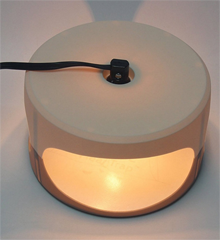
Flea Trap
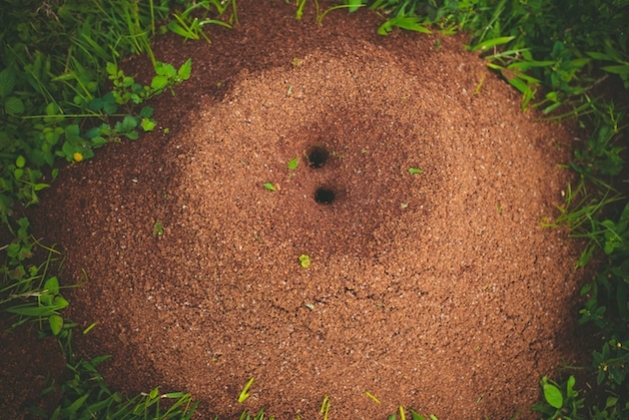
Norway and roof rats do not get along. The Norway rat is larger and the more dominant species; it will kill a roof rat in a fight. When the two species occupy the same building, Norway rats will dominate the basement and ground floors, with roof rats occupying the attic or second and third floors. Contrary to some conceptions, the two species cannot interbreed. Both species may share some of the same food resources but do not feed side-by-side. Rats may grab food and carry it off to feed elsewhere.
Rats of either species, especially young rats, can squeeze beneath a door with only a 1/2 inch gap. If the door is made of wood, the rat may gnaw to enlarge the gap, but this may not be necessary.
Norway rats eat a wide variety of foods but mostly prefer cereal grains, meats, fish, nuts, and some fruits. When searching for food and water, Norway rats usually travel an area of about 100 to 150 feet in diameter; seldom do they travel any further than 300 feet from their burrows or nests. The average female Norway rat has four to six litters per year and may successfully wean 20 or more offspring annually.
Norway Rats
Roof Rats
Like Norway rats, roof rats eat a wide variety of foods, but their food preferences are primarily fruits, nuts, berries, slugs, and snails. Roof rats are especially fond of avocados and citrus and often eat fruit that is still on the tree. When feeding on a mature orange, they make a small hole through which they completely remove the contents of the fruit, leaving only the hollowed out rind hanging on the tree. The rind of a lemon is often eaten, leaving the flesh of the sour fruit still hanging. Their favorite habitats are attics, trees, and overgrown shrubbery or vines.
Common Indianapolis Pests & Insects
Ants
Ants can live almost anywhere. There are about 10,000 species of ants. Within each species, there are usually many different types. Ants are social insects that live in colonies. Ant colonies include one or more queens, as well as workers, eggs, larvae, and pupae. The worker ants maintain their developed structures known as nests. Nests protect the ants against their enemies, offer some protection against weather, and are often placed close to water and food sources. Some ant species nest in the ground, often under concrete or slabs. Some species are found in wood, such as fence posts, dead logs, hollow trees, or within buildings. Ants cannot eat wood like termites can because they can’t digest cellulose.
Brown Recluse Spiders
This spider prefers undisturbed places, so it typically lives in dark corners and also under furniture, boxes, and books. It has a rather shy and non -aggressive behavior, although it will bite humans if it feels threatened. Its web is of a loose and irregular, yet very sticky thread. It is only built as a daytime retreat, and as an egg holder. These spiders can survive six months without food or water, hidden in their lair during the daytime, roaming at night. About 50% of Brown Recluse Spider bites are ‘dry,’ meaning that no venom is injected and nothing happens to the victim. In fact, often times the victim does not even realize that he has been a bit. Typically, when venom is injected, the victim will experience an immediate redness that develops around the bite then begins to disappear within a few hours. Very often, for the first 24 hours, the bite appears to be no worse than that of a mosquito; then it begins to blister in the center. Within 24 to 36 hours the blister breaks open, leaving open, oozing ulceration. This ulceration ’scabs’ over within three weeks from the initial bite, leaving a permanent scar. If the bite is delivered in fatty tissue, the lesion may be very deep and extensive, not healing for over two or three years. In extreme cases where the bite is not taken care of early, skin graft, amputation, and the possibility of bone marrow failure may occur
Cockroaches
Roaches are very adaptable insects, surviving where other insects would be extinct. Because of their adaptable natures there one of the more difficult pests to control. Roaches are a health hazard, carrying bacteria on their bodies that are transmitted to humans. The main diseases transmitted are different forms of gastroenteritis including food poisoning, dysentery, and diarrhea. There are several species of cockroaches located all over the United States.
Earwigs
Gophers
Pocket gophers are the most common type of gopher. These rodents can be anywhere from 5 to 14 inches long. Pocket gophers have fur-lined pouches outside of the mouth, one on each side of the face. These pockets, which are capable of being turned inside out, are used for carrying food. Gophers are active year-round but are the most visibly active in the spring and fall when the soil is of the ideal moisture content for digging. They are extremely well adapted and built for an underground existence. Gopher underground burrows can be very deep, up to several feet, and several hundred feet in length. As gophers dig burrows, pushing the soil to the surface, they leave a mound, usually in a fan-shaped.
Earwigs are easily recognizable by their pincers (forceps harmless to humans) at the ends of their abdomen. They are dark reddish-brown, with light brown legs, and are about 5/8 inch long. In a season, females reproduce up to 20-60 eggs laid in burrows (called chambers), about two to three inches beneath the soil. Most species have one generation a year, over-wintering in the soil. Both adults and the young require moisture to live. Earwigs are primarily nocturnal, feeding at night. They are scavengers, eating primarily dead insects and decomposing plant materials. Some earwig species are attracted to lights. During the day, earwigs will seek shelter under organic matter such as mulch, pine straw, leaf litter, and other debris. They prefer dark and damp areas like under sidewalks and stones. Earwigs can eat plants and do damage to field crops. They are found in
homes and can get in through entry points like doors and windows, and by going up the foundation. Their populations build up around foundations. Earwigs produce large populations rather quickly and are often a major problem in new subdivisions. Earwigs live in habitats also harboring centipedes, sow bugs (pill bugs), and millipedes. Removing
earwig habitats is very important to control all insects.
INSJECTA
Targeted Pest
German Cockroaches and Ants
Targeted Properties / Materials
Food preparation, processing and handling areas (kitchens, restaurants, canteens, dairies, bakeries, wood decorative panels, patient clinics, laboratories… etc).
SAFE SPRAY
Targeted Pest
Cockroaches, ants, beetles, silverfish, sticks, mites, fleas, bedbugs
Targeted Properties / Materials
Green plants and grass
RAT PROOF
Targeted Pest
Rats and mice
Targeted Properties / Materials
All buildings of inhabitance, food processing and preparation areas, filth
and garbage disposals, sewer lines and tunnels, cables, electric cabling areas, paper, and wood manufacturing and storage areas,…etc.
FLYCON
Targeted Pest
Flies, mosquitoes, and wasps
Targeted Properties / Materials
Garbage disposals, swamps, stagnant water, and ponds, floated sewer lines, sewage plants, filth and debris areas, food preparation and handling areas…
AQUAFUMIGTA
Targeted Pest
Cockroaches, ants, moth, silverfish, mites, fleas, beetles, weevils,...etc
Targeted Properties /Materials
Passenger and cargo planes and trains, paper and documentary libraries, textiles and cloth stores, food stored products, laboratories, linen stores and laundries,…etc
TERMIPOST
Targeted Pest
Dry wood termites, powder, post beetles, woodworms, & wood
decaying insects.
Targeted Properties /Materials
Materials Antiquities & furniture, wood decorative boards and panels, and all types of wood and timber.
STEROGAS
Targeted Pest
Against viruses, spores, and bacteria.
Targeted Properties /Materials
Patient-clinics,X-ray rooms, laboratories, classrooms, linen stores and laundries, hotel guest rooms, and ambulances.
SNAKORPIO REPEL
Targeted Pest
Snakes and scorpions
Targeted Properties\Materials
Sandy and rocky area, weeds and bushy areas of deserted buildings.
STRANYMAL
Targeted Pest
Dogs and cats
Targeted Properties /Materials
Outskirts fields, car parking, debris areas, etc
BIRD REPEL
Targeted Pest
Pigeons, birds, and bats.
Targeted Properties /Materials
Roosting areas of roofs and balconies, air conditioning units, and antennas.
LAWN SPRAY
Targeted Pest
Millipedes, centipedes, grasshoppers, nymphs,…etc
Targeted Properties /Materials
Green plants and grass
SAFE SPRAY
Targeted Pest
Perennials such as bahiagrass, bermudagrass, bluegrass, broomsedge, dandelion dogfennel, goldenrod, johnsongrass, nutsedge, etc…..
Targeted Properties /Materials
Airport runways, railroads, highways,
the pipeline right of ways, petroleum tank farms, lumber yards, storage areas and industrial plant sites, etc


